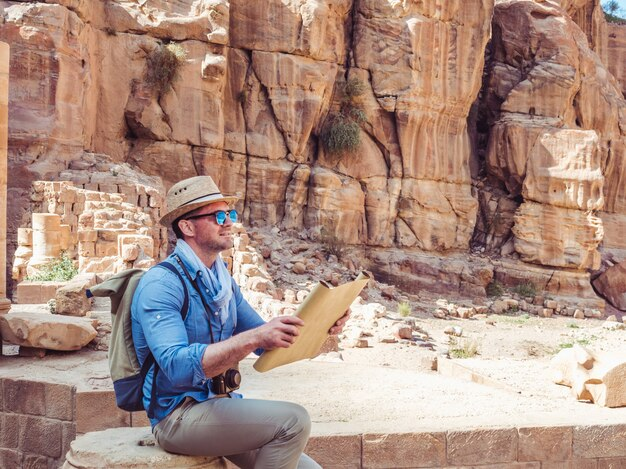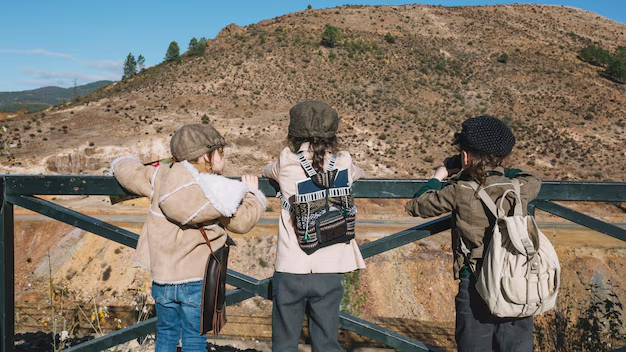Exploring historical sites is one of the most enriching travel experiences, offering a deeper understanding of cultures, traditions, and the events that shaped the world. Whether you’re wandering through ancient ruins, visiting castles, or touring museums, there’s always something fascinating to learn. However, making the most of these sites requires preparation, respect, and knowledge. Below are some essential travel tips to help you have a memorable and insightful experience while exploring historical sites.
1. Do Your Research Before You Go
Before visiting any historical site, take some time to research its history, significance, and any key facts. Knowing the background of a location helps you appreciate its importance and allows you to engage more meaningfully with what you’re seeing. Many historical sites offer guided tours or audiobooks that provide context, but having some knowledge beforehand will enrich your experience.
2. Plan Your Visit During Off-Peak Times
Historical sites can become overcrowded, especially during peak tourist seasons. To avoid the crowds, try to visit early in the morning or later in the afternoon. Weekdays tend to be less crowded compared to weekends, and visiting during the off-season can also give you a more peaceful experience. This not only allows you to explore without the rush but also gives you the opportunity to appreciate the site in a quieter, more reflective setting.
3. Wear Comfortable Shoes and Dress Appropriately
Many historical sites require a lot of walking, often on uneven or rough terrain. Comfortable, sturdy shoes are essential to ensure you can explore without discomfort. Additionally, dress appropriately for the location—this might mean wearing modest clothing when visiting religious or sacred sites or ensuring you have appropriate sun protection when touring open-air ruins.
4. Stay Hydrated and Bring Snacks
Exploring historical sites can be physically demanding, especially if the site is spread out over a large area. Be sure to bring water and some light snacks with you to keep your energy up. Many historical sites are located in areas where food and drink options are limited, so it’s always a good idea to pack something in your bag.
5. Be Respectful of Local Culture

When visiting historical sites, especially those with cultural or religious significance, it’s important to be respectful. Follow any rules or guidelines posted at the site, such as restrictions on photography, dress codes, or the need for silence. Many historical sites are sacred or hold deep cultural importance, so showing respect helps preserve these places for future generations.
6. Take Time to Absorb the Atmosphere
It’s easy to rush through historical sites, eager to see everything. However, try to slow down and take the time to truly absorb the atmosphere of the place. Sit for a while in a quiet spot, admire the architecture, or reflect on the historical significance of the site. This not only enhances your experience but also allows you to form a deeper connection with the place.
7. Hire a Guide for Deeper Insight
While guidebooks and audio tours provide great information, a personal guide can offer a much more enriched experience. A knowledgeable guide can share anecdotes, lesser-known facts, and interesting perspectives that you might not learn otherwise. This is especially useful in places with rich histories, like ancient ruins or historical cities, where local context can transform your visit.
8. Take Photos, but Be Mindful
Capturing memories is an important part of travel, but when exploring historical sites, be mindful of where and when you take photos. Respect areas where photography is prohibited and avoid using flash in places with delicate artifacts or artwork. Taking a few photos of significant moments is fine, but remember to spend more time soaking in the experience rather than focusing on your camera.
9. Respect Preservation Efforts
Many historical sites are under threat due to the ravages of time, weather, and tourism. Respect any preservation efforts, such as restricted areas, barriers, or signage, that are in place to protect the site. These efforts ensure that future generations will also be able to enjoy these remarkable places, so be sure to follow the rules and do your part in protecting them.
10. Take Notes or Keep a Travel Journal
For history enthusiasts, keeping a travel journal or taking notes during your visit can be an excellent way to remember what you learned. Documenting the facts, your thoughts, and reflections about the site will help you remember key moments and enrich your understanding of what you experienced.
Conclusion
Exploring historical sites offers a profound opportunity to connect with the past and gain insights into the cultures that shaped our world. By following these tips, you’ll be able to maximize your experience, ensuring that you not only visit the site but truly engage with its history. From preparation and respectful behavior to taking the time to appreciate the atmosphere, these steps will help you make the most of every historical journey.
FAQs
Q. How can I prepare for visiting a historical site?
To prepare, research the site’s history, learn about any customs or rules for visitors, and plan your visit during off-peak hours. Wearing comfortable clothing and packing essentials like water and snacks can also help.
Q. Is it necessary to hire a guide at historical sites?
While it’s not mandatory, hiring a guide can provide deeper insights into the site’s history and significance, making your experience more enriching and engaging.
Q. Can I take photos at historical sites?
Many historical sites allow photography, but some places may have restrictions, especially in sacred areas or museums. Always be mindful of the rules and avoid using flash in sensitive areas.
Q. How can I respect local cultures when visiting historical sites?
Follow the local customs, adhere to dress codes, remain quiet or respectful in sacred spaces, and abide by any rules set by the site to show respect for the local culture.
Q. What should I do if a historical site is very crowded?
To avoid crowds, try visiting early in the morning or later in the afternoon, and consider traveling during the off-season. You can also visit less popular sites that may offer a similar experience without the crowds.
